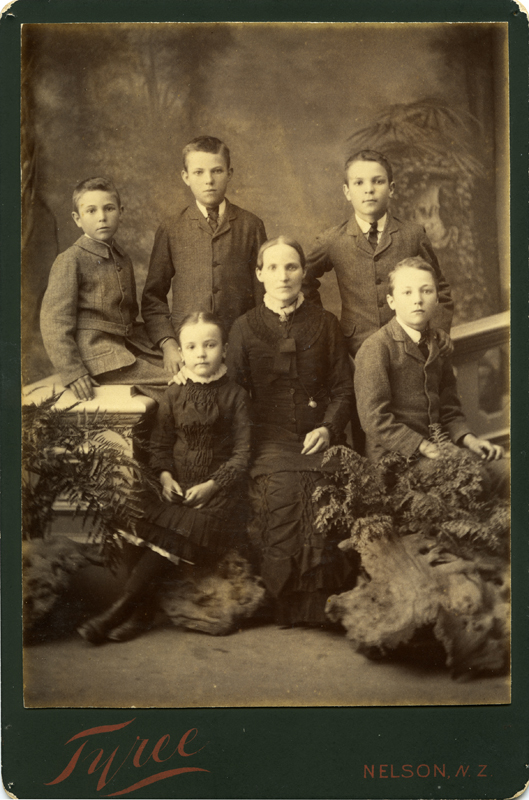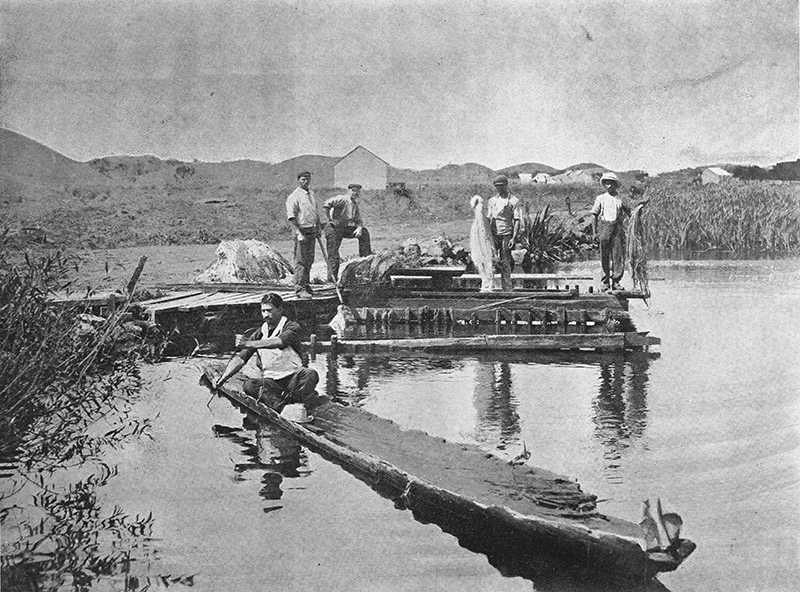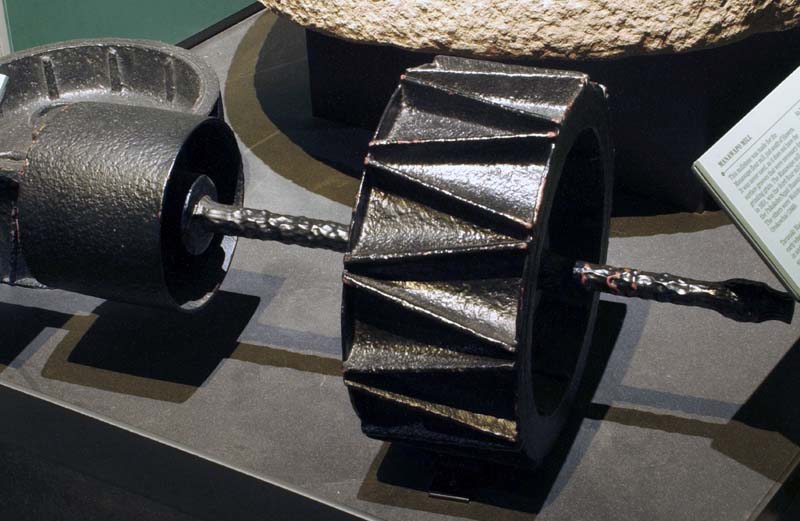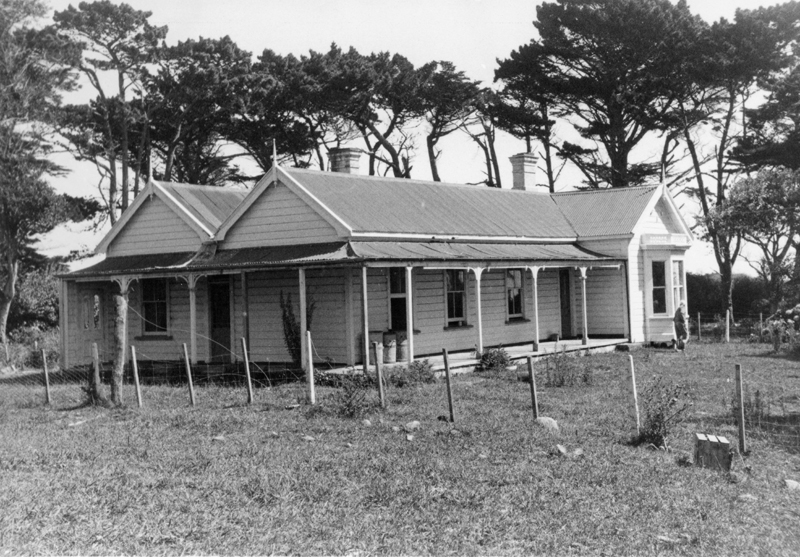



Amazingly, James Rutherford (father of Lord Ernest Rutherford, who became one of the world's best-known scientists) was one of Taranaki's first flax millers. Originally trained by his father to be a wheelwright and joiner, he first went into the milling business in the South Island.
After marrying schoolteacher Martha Thompson - the couple would eventually produce a large brood of 12 children - he began a steam flax mill in Havelock, Pelorus Sound. Later he would run two more, before turning to saw-milling, making railway sleepers for the Government, for the first South Island line.
At Havelock, he built his own wharf and watched as his business flourished and grew. The Rutherford’s were a close knit family, gathering around the family piano to sing, forging out a life with few luxuries. With both parents keen to have their children gain an education, the children began their schooling, under Martha's dictum that 'all knowledge is power'.
But in January 1884, two of Rutherford's sons drowned when their small boat overturned while fishing in the harbour. A little over a week later, Rutherford himself suffered a serious accident at the wharf.
While recuperating, an economic downturn meant his saw-milling contract was cancelled. Unable to bear living in Havelock any longer, Rutherford knew he had to move on, and by the end of the month had sold his mills on a three year lease. He travelled to the North Island, actively seeking a new business opportunity. After being struck by the vast amounts of flax growing wild around the Taranaki coast, Rutherford decided to buy rights to about 410 acres (166 hectares) of land on Lower Parihaka Road in Pungarehu, paying £3 per acre.
He returned to Pelorous to pack up his family. When he sailed from Havelock in Pelorous Sound, his milling equipment sailed with him, shipped from Nelson on the chartered steamship Murray, an 100 tonne Anchor Line Vessel barely big enough for the job.
In 1888, James Rutherford designed a fine rimu villa at Pungarehu, before carefully choosing a site for a new mill. Milling would be easy in Taranaki, he knew, because of the abundant flax and mountain streams. A mill was built on a bend in the Waitōtara River, with half a hectare nearby flooded for a millpond. Unlike other Taranaki mills which ran on power generated by water-wheel, Rutherford installed a stream driven turbine.
He built a causeway so large quantities of flax could be soaked without workers having to wade through the water. A grill was mounted at the entrance of the turbine, to stop eels from clogging the 28 horse-power turbine blades. Between the homestead and the mill, Rutherford constructed huts for the workers, a cookhouse and a dining room which doubled as a hall, complete with library and piano. Soon 100 men lived and worked at the mill, sleeping in tents when beds in the bunkhouses ran out.
A large garden was planted to supply the house with vegetables, and a young Earnest Rutherford sometimes found himself helping out while on holiday from his Napier boarding school. Family anecdote has it that he was in the garden when he received news that he had won a scholarship to Cambridge University, in England, as one of the first 'foreign' students to be admitted without first going through the Cambridge undergraduate system. "That is the last potato I'll ever dig" he said.
Born in 1871, Ernest Rutherford, became one of the greatest scientists of the 20th Century, and is considered the creator of modern atomic physics and the forerunner of the nuclear age. In 1908, at the age of 37, he was awarded the Nobel Prize for Chemistry for his work with radioactive material. His second discovery, the nuclear model of the atom, became the basis for how we see the atom today. During his lifetime, he gained 21 honorary degrees and was featured on the stamps of four countries. His image adorns the New Zealand $100 note. When he died, his ashes were interred at Westminster Abbey, next to Sir Isaac Newton.
It takes eight tonnes of green flax to make a tonne of fibre, so James Rutherford continually replenished his plantations with specially selected native plants. He also developed a special scraper to remove the green matter to cut down on labour and packing time.
Soon, Rutherford ran mills at Waverley, Opunake and Warea. Other businessmen, quick to embrace the new industry, meant nine mills were soon operating between Ōkato and Oaonui alone. From the Taranaki Herald, 22 May 1889: "Mr Rutherford, who owns three mills, is stated to be turning out 14 tons per week. Mr Wright, 2 mills, about 10 tons. These outputs will be materially increased during the summer as more hands are taken on… The above figures give the public an idea of the flax industry in one part of the district, but, in addition to these mills, there are many more in other directions…"
By 1919, many young men had found their first steady job at the mills, earning around 2s 6d per week. The quality of the fibre produced in the Rutherford mills was high enough to win international exhibition certificates in England, France, Australia and possibly the United States of America.
As with the rest of the country, it was always boom or bust for the flax industry in Taranaki. When the bottom fell out of the market for the final time, mills were forced to close down. With local flax fields steadily being cleared for pasture land, the Rutherford’s found themselves having to pay the Egmont County Council a royalty to cut from the roadside.
Rutherford's mill at Pungarehu - where three generations of Rutherford’s had worked the mills and lived through fluctuations in fortune - was the last mill in Taranaki to close. In 1929, despite a long and happy life at Pungarehu, the Rutherford’s shut their doors and moved on.
In 1952, an unnamed son of James was interviewed for a newspaper feature and offered these few thoughts on milling life: "I milled for five years at Opunake and during that time our chief troubles were wind, town cows and Māori pigs… The mill employed all types of men, from ex-doctors to prize fighters. But those were the happiest days of my life. The mill hands were not only wonderful workers but proved loyal to their employers always.
"Thousands of tons of Taranaki flax were milled, baled and exported overseas but during World War One, millers worked in the dark and a shortage of workers meant the mills were forced to operate from one and a half to two days weekly. Header machines used extensively on the Canadian wheat prairies were responsible for dealing the death blow to the industry. We could not compete with Manila, producers of which operated with native labour. Prices slumped heavily like a pricked balloon. Even a final attempt to obtain a market for fibre by shipping it to England and later Canada failed. The bottom had fallen out of the market. And so, the once throbbing flax mills fell idle and finally disappeared, making way for an even greater industry - dairying - to follow."
Please do not reproduce these images without permission from Puke Ariki.
Contact us for more information or you can order images online here.